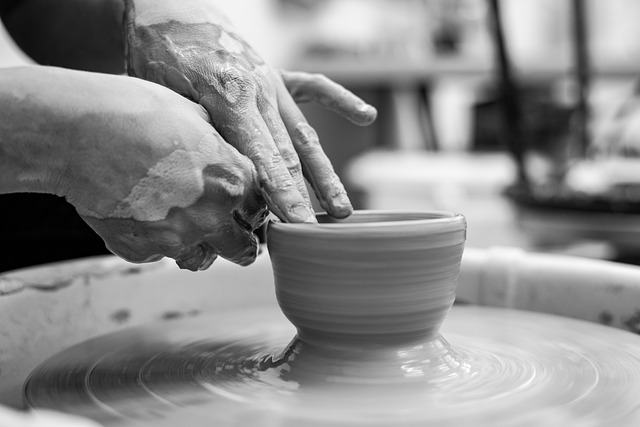Understanding the Culture of Creativity
When embarking on the journey to foster a culture of creativity, it’s crucial to first understand what this culture encompasses. A culture of creativity is an environment that encourages individuals to express their unique ideas, think outside the box, and challenge the status quo. This doesn’t simply happen overnight; it requires dedication, open-mindedness, and a commitment to nurturing innovative thinking among all team members. In essence, a culture of creativity thrives when individuals feel free to take risks, voice their opinions, and engage in collaborative discussions that spark new ideas.
One significant aspect of fostering a culture of creativity is having leaders who genuinely value innovation. This commitment must manifest in daily practices, not just in occasional inspirational speeches. Leadership plays a pivotal role in setting the tone for creativity within an organization. When leaders champion creativity, they motivate others to embrace change, explore new possibilities, and actively seek out innovative solutions. Encouraging open communication, providing resources for experimentation, and recognizing creative efforts can cement the foundations of such a culture. All these elements work harmoniously to create an atmosphere where creativity can flourish.
The Role of Collaboration in Innovation
Collaboration serves as a cornerstone for effectively generating new ideas and nurturing innovation. When people from diverse backgrounds, skills, and experiences come together, the resulting synergy can lead to groundbreaking ideas. Collaborative efforts help spark creativity because they allow individuals to challenge each other’s assumptions and push beyond initial thoughts. This interaction inspires team members to build on each other’s ideas, leading to a wealth of innovative concepts that would not have emerged in isolation.
Think about it. How often have you been in a brainstorming session where one person’s comment ignites a flurry of ideas? This dynamic exemplifies how collaborative environments breed creativity and innovation. To promote collaboration, organizations should implement structures and processes that bring individuals together seamlessly. This might involve regular brainstorming sessions, cross-departmental projects, or simply creating spaces that encourage teamwork. Tools like digital collaboration platforms can also enhance engagement, especially in remote settings. The more people feel connected and supported in their endeavors, the more innovation flourishes in their work culture.
Encouraging Risk-Taking
Another critical element in fostering a culture of creativity is encouraging risk-taking. This aspect often poses a challenge, particularly in traditional business environments, where fear of failure can stifle innovative thinking. Cultivating a safe space allows employees to experiment and take risks without the fear of negative consequences. When team members are empowered to explore uncharted territories and push boundaries, they open the door to genuinely innovative ideas.
Organizations can take tangible steps to promote risk-taking. Initiating programs that reward creativity, even if the outcomes are not always successful, reinforces a culture where innovation is valued. Moreover, sharing stories of successful failures can inspire others to embrace risk and learn from their endeavors. It’s essential to frame these experiences positively, emphasizing that failure is merely a stepping stone toward achieving success. Creating this mindset among employees fosters resilience and nurtures creativity, as individuals continually refine their approaches based on lessons learned from past attempts.
Creating an Inclusive Environment
Inclusion plays a significant role in fostering a culture of creativity. A diverse team brings a wide array of perspectives, experiences, and ideas to the table, enriching the creative process. When individuals from various backgrounds feel respected and valued, they are more likely to share their innovative thoughts. Therefore, creating an environment that embraces diversity and inclusion should be a priority for any organization looking to spur creativity.
Practicing inclusivity in the workplace involves training team members to understand and appreciate different perspectives. Leaders can implement diversity-focused initiatives, actively recruit from a broad talent pool, and ensure everyone feels empowered to contribute. Regular training on cultural competence can further enhance this dynamic. Engaging with employees about their unique experiences and actively seeking input from all levels fosters a sense of belonging. This engagement not only drives innovation but also enhances employee morale, leading to a more harmonious and creative workplace.
Integrating Continuous Learning
Continuous learning is a vital aspect of fostering a culture of creativity and innovation. In a fast-paced world, staying ahead of the curve means constantly acquiring new knowledge and skills. Organizations should encourage their employees to seek out educational opportunities, attend workshops, or explore new technologies. This commitment to learning cultivates a growth mindset, where individuals continuously seek improvement and are open to new ideas.
Providing resources and support for professional development demonstrates a company’s investment in its employees. Providing access to online courses, mentorship programs, and industry conferences can inspire individuals to think creatively about their roles and how they can contribute to the organization. By emphasizing the importance of continuous learning, team members feel more confident trying out new approaches and challenging existing processes, fostering an environment ripe for innovation.
Implementing Effective Feedback Mechanisms
Feedback mechanisms are crucial for a creative culture, guiding individuals toward improvement and innovation. Constructive feedback enables team members to understand how their ideas align with overall goals and objectives. Moreover, an effective feedback loop encourages open discussions about ideas, critiques, and suggestions. It ensures that all voices are heard, which strengthens the innovative process.
Organizations must cultivate a mindset that values feedback as a tool for growth rather than criticism. Implementing regular feedback sessions allows individuals to share insights, refine their ideas, and better align their projects with the company’s vision. Furthermore, soliciting feedback from various sources, including peers, supervisors, and team members, helps build a more comprehensive understanding of creative endeavors. This practice not only improves individual projects but also contributes enormously to an organization’s innovative capabilities.
Celebrating Success and Learning from Failure
One of the most effective ways to foster a culture of creativity is celebrating success while embracing failure as a learning opportunity. When organizations acknowledge and reward innovative thinking, they reinforce the behavior they want to see. Recognizing contributions can inspire others to innovate and empowers individuals to keep pushing boundaries. Celebrating even the small successes creates a positive atmosphere where creativity can take root.
At the same time, organizations must be transparent about failures. Highlighting stories where projects didn’t meet expectations but yielded valuable lessons can be incredibly motivational. This approach decreases the stigma surrounding failure and frames it as a necessary part of the creative process. By establishing a tradition of sharing both triumphs and lessons learned, organizations nurture an atmosphere where experimentation is encouraged, and creativity thrives.
Utilizing Technology to Enhance Creativity
In today’s digital age, technology plays a significant role in fostering creativity and innovation. Digital tools can streamline processes, facilitate collaboration, and provide platforms for brainstorming and idea generation. Technologies such as virtual reality, artificial intelligence, and cloud-based collaboration tools have opened new avenues for creative thinking, allowing teams to brainstorm and collaborate seamlessly, regardless of location.
Moreover, organizations can employ creativity-enhancing software, such as mind mapping tools, project management applications, and design software, to elevate their innovation processes. By integrating these tools into day-to-day functions, organizations can increase productivity while simultaneously inspiring creative thought. Encouraging employees to leverage technology in their creative pursuits cultivates an environment where innovation is both a product of collaboration and a natural part of the workflow.
Establishing Clear Vision and Goals
Finally, to foster a culture of creativity and innovation, organizations must establish a clear vision and articulate specific goals. This clarity enables team members to align their creative efforts with the organization’s broader mission. Knowing the overarching objectives inspires employees to think creatively about how their work contributes to larger aims, transforming them into active participants in the innovation process.
Moreover, having clearly defined goals allows organizations to measure their creative successes and foster accountability. Teams can set benchmarks for creative projects, celebrate milestones, and evaluate results. This approach not only motivates individuals to continue pushing the envelope but also ensures that innovation aligns with the organization’s vision. A well-defined framework creates a cohesive environment that nurtures creativity while driving towards common objectives.
FAQs
- What is a culture of creativity?
- A culture of creativity is an environment that encourages individuals to express their ideas freely, think innovatively, and collaborate with others. It is a setting where risk-taking is supported, and diverse perspectives are valued, leading to enhanced creativity and innovation.
- How can collaboration enhance innovation?
- Collaboration fosters innovation by bringing together diverse skill sets and perspectives, allowing team members to build on each other’s ideas. This synergy can lead to more innovative solutions and a richer creative process.
- Why is risk-taking important for creativity?
- Risk-taking is essential for creativity as it empowers individuals to explore new ideas without the fear of failure. It encourages experimentation and helps break down barriers, allowing innovation to emerge from unexpected sources.
- What role does feedback play in fostering creativity?
- Feedback is vital for fostering creativity because it provides insights and guidance, helping individuals refine their ideas. A healthy feedback loop encourages open discussions and strengthens the innovative process.
- How can technology enhance creativity in the workplace?
- Technology enhances creativity by providing tools that streamline processes, facilitate collaboration, and support brainstorming. Digital platforms enable teams to share ideas and work together efficiently, driving innovation in a modern workplace.



